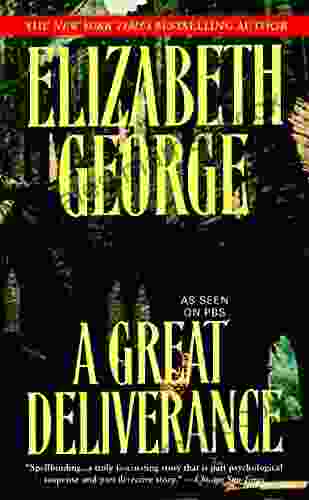An Intimate History of the Home: From Caves to Castles to Condos

4.7 out of 5
| Language | : | English |
| File size | : | 11061 KB |
| Text-to-Speech | : | Enabled |
| Screen Reader | : | Supported |
| Enhanced typesetting | : | Enabled |
| X-Ray | : | Enabled |
| Word Wise | : | Enabled |
| Print length | : | 416 pages |
| Lending | : | Enabled |
The home is more than just a place to live. It is a reflection of our values, our culture, and our history. In this article, we will take an intimate journey through the history of the home, from its humble beginnings in caves to its present-day incarnation as a symbol of comfort, safety, and belonging.
The Early Home: Caves and Huts
The earliest homes were nothing more than caves and huts. These simple structures provided shelter from the elements and a place to sleep. As humans evolved, so did their homes. Over time, homes became more complex and elaborate, reflecting the growing needs and desires of their occupants.
In ancient Greece, homes were typically built around a central courtyard. This courtyard was the heart of the home, where the family would gather to eat, sleep, and socialize. Greek homes were often decorated with beautiful frescoes and sculptures.
In ancient Rome, homes were more elaborate than in Greece. Roman homes often had multiple rooms, including a kitchen, a dining room, a living room, and a bedroom. Roman homes were also often decorated with mosaics and paintings.
The Medieval Home: Castles and Manors
During the Middle Ages, homes became more fortified. Castles were built to protect the nobility from attack. Castles were often surrounded by moats and walls. They were also equipped with towers and other defensive features.
Manors were the homes of the wealthy landowners. Manors were typically made of stone and had multiple rooms. They were often surrounded by gardens and orchards.
The Renaissance Home: Palaces and Villas
During the Renaissance, homes became more elaborate and luxurious. Palaces were built for the wealthy and powerful. Palaces were often decorated with beautiful paintings, sculptures, and tapestries.
Villas were the homes of the wealthy merchants and bankers. Villas were typically smaller than palaces, but they were still very comfortable and luxurious. Villas were often located in the countryside, where the owners could enjoy the fresh air and scenery.
The Enlightenment Home: Townhouses and Farmhouses
During the Enlightenment, homes became more practical and functional. Townhouses were built in cities to accommodate the growing population. Townhouses were typically narrow and tall, with multiple stories. They were often made of brick or stone.
Farmhouses were the homes of the farmers and other rural residents. Farmhouses were typically made of wood and had a simple, functional design.
The Industrial Revolution Home: Apartments and Suburbs
During the Industrial Revolution, homes became more affordable and accessible to the working class. Apartments were built in cities to accommodate the influx of workers. Apartments were typically small and cramped, but they were still a step up from the slums that many workers had lived in previously.
Suburbs were developed around cities to provide homes for the growing middle class. Suburbs were typically filled with single-family homes. They were often designed with parks, schools, and other amenities.
The 20th Century Home: Modernism and Mass-Production
In the 20th century, homes became more modern and streamlined. Modernist homes were typically characterized by their simple, geometric lines and open floor plans. They were often made of concrete, glass, and steel.
Mass-production made homes more affordable and accessible to the general public. Mass-produced homes were typically built in large subdivisions. They were often designed with similar floor plans and elevations.
The 21st Century Home: Sustainability and Technology
In the 21st century, homes are becoming more sustainable and technologically advanced. Sustainable homes are designed to minimize their environmental impact. They often use energy-efficient appliances and materials.
Technology is also playing a increasingly important role in the home. Smart homes are equipped with devices that can be controlled remotely. These devices can make life easier and more convenient for homeowners.
The home has come a long way since its humble beginnings in caves and huts. Today, homes are more than just a place to live. They are a reflection of our values, our culture, and our history. They are a place where we can feel safe, comfortable, and loved.
As we move into the future, homes will continue to evolve. They will become more sustainable, more technologically advanced, and more personalized. The home will always be a place of comfort, safety, and belonging.
4.7 out of 5
| Language | : | English |
| File size | : | 11061 KB |
| Text-to-Speech | : | Enabled |
| Screen Reader | : | Supported |
| Enhanced typesetting | : | Enabled |
| X-Ray | : | Enabled |
| Word Wise | : | Enabled |
| Print length | : | 416 pages |
| Lending | : | Enabled |
Do you want to contribute by writing guest posts on this blog?
Please contact us and send us a resume of previous articles that you have written.
 Top Book
Top Book Novel
Novel Fiction
Fiction Nonfiction
Nonfiction Literature
Literature Paperback
Paperback Hardcover
Hardcover E-book
E-book Audiobook
Audiobook Bestseller
Bestseller Classic
Classic Mystery
Mystery Thriller
Thriller Romance
Romance Fantasy
Fantasy Science Fiction
Science Fiction Biography
Biography Memoir
Memoir Autobiography
Autobiography Poetry
Poetry Drama
Drama Historical Fiction
Historical Fiction Self-help
Self-help Young Adult
Young Adult Childrens Books
Childrens Books Graphic Novel
Graphic Novel Anthology
Anthology Series
Series Encyclopedia
Encyclopedia Reference
Reference Guidebook
Guidebook Textbook
Textbook Workbook
Workbook Journal
Journal Diary
Diary Manuscript
Manuscript Folio
Folio Pulp Fiction
Pulp Fiction Short Stories
Short Stories Fairy Tales
Fairy Tales Fables
Fables Mythology
Mythology Philosophy
Philosophy Religion
Religion Spirituality
Spirituality Essays
Essays Critique
Critique Commentary
Commentary Glossary
Glossary Bibliography
Bibliography Index
Index Table of Contents
Table of Contents Preface
Preface Introduction
Introduction Foreword
Foreword Afterword
Afterword Appendices
Appendices Annotations
Annotations Footnotes
Footnotes Epilogue
Epilogue Prologue
Prologue Dan Fargo
Dan Fargo K K Allen
K K Allen George Reisman
George Reisman Tricia Norma
Tricia Norma David Niall Wilson
David Niall Wilson Logan C Kane
Logan C Kane Rachel Amphlett
Rachel Amphlett Philip Gibbs
Philip Gibbs Malcolm Gauld
Malcolm Gauld Lucy Worsley
Lucy Worsley Phoebe Wang
Phoebe Wang The Vintage House Publication
The Vintage House Publication Cory Walker
Cory Walker Gary Wittmann
Gary Wittmann Mike Meeson
Mike Meeson Ecem Yucel
Ecem Yucel Eric Foster
Eric Foster Stassi Schroeder
Stassi Schroeder Colbie Caillat
Colbie Caillat Brenda Baker
Brenda Baker
Light bulbAdvertise smarter! Our strategic ad space ensures maximum exposure. Reserve your spot today!

 Kazuo IshiguroThe Odyssey Translated into Verse by Alexander Pope With an Introduction and...
Kazuo IshiguroThe Odyssey Translated into Verse by Alexander Pope With an Introduction and... Ethan MitchellFollow ·2.5k
Ethan MitchellFollow ·2.5k Mario BenedettiFollow ·18.8k
Mario BenedettiFollow ·18.8k Theodore MitchellFollow ·11.8k
Theodore MitchellFollow ·11.8k Jacob FosterFollow ·5.9k
Jacob FosterFollow ·5.9k Aleksandr PushkinFollow ·11.4k
Aleksandr PushkinFollow ·11.4k Roland HayesFollow ·5.2k
Roland HayesFollow ·5.2k Ray BlairFollow ·7.3k
Ray BlairFollow ·7.3k Juan ButlerFollow ·19.9k
Juan ButlerFollow ·19.9k

 Edwin Cox
Edwin CoxThe Great Deliverance Inspector Lynley: A Literary...
: In the realm of detective fiction,...

 Christian Carter
Christian CarterMetal Gear Solid Ground Zeroes Guide, Walkthrough, Tips,...
Metal Gear Solid...

 Branden Simmons
Branden SimmonsYellow Green: Not an Autobiography of Marcy Chen
Yellow Green:...

 Edward Reed
Edward ReedPurple Orchids: An Artistic Tale of Two Sisters in the...
Prologue: A Legacy Unveiled In the...

 Earl Williams
Earl WilliamsThe Evolving Housing Market Dynamics in Africa:...
The African housing market is a...

 William Faulkner
William FaulknerVoices In My Head: A Cerebral Symphony of Terror
In the labyrinthine...
4.7 out of 5
| Language | : | English |
| File size | : | 11061 KB |
| Text-to-Speech | : | Enabled |
| Screen Reader | : | Supported |
| Enhanced typesetting | : | Enabled |
| X-Ray | : | Enabled |
| Word Wise | : | Enabled |
| Print length | : | 416 pages |
| Lending | : | Enabled |










